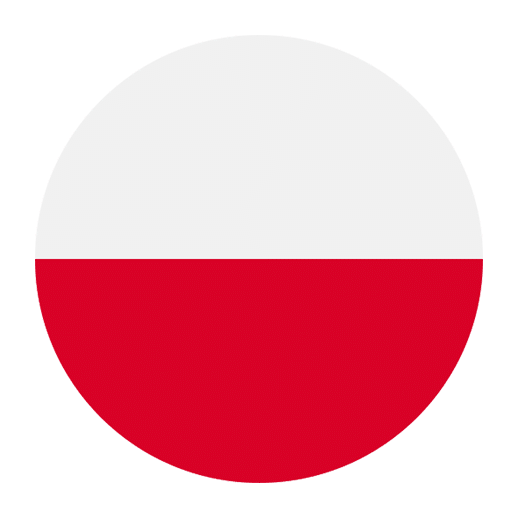The Polish language, known as “język polski” in its native tongue, is a West Slavic language spoken by over 45 million people worldwide. While mastering any language poses its challenges, Polish is particularly unique due to its numerous dialects. For English speakers, navigating these dialects can seem daunting. However, with the right strategies and understanding, one can not only grasp standard Polish but also appreciate and master its rich dialectal diversity.
Understanding Polish Dialects
Dialects are regional variations of a language, distinguished by unique pronunciation, vocabulary, and sometimes grammar. In Poland, dialects have been shaped by historical, geographical, and social influences. Here’s a brief overview of the major dialect groups:
1. **Greater Polish (Dialekt Wielkopolski)**: Spoken in the Greater Poland region, this dialect is known for its archaic vocabulary and some unique phonetic features.
2. **Lesser Polish (Dialekt Małopolski)**: Found in the Lesser Poland region, this dialect is distinguished by its melodic intonation and distinctive pronunciation.
3. **Masovian (Dialekt Mazowiecki)**: Predominant in the Masovian region, it is characterized by specific phonological features like the pronunciation of soft consonants.
4. **Silesian (Dialekt Śląski)**: This dialect, spoken in Silesia, has significant German influences due to historical migrations and political changes.
5. **Kashubian (Dialekt Kaszubski)**: Often considered a separate language, Kashubian is spoken by a smaller community in the Pomeranian region and has preserved many old Polish features while incorporating others from German.
6. **Podhale (Góralski)**: Spoken by the highlanders in the Tatra Mountains, this dialect is heavily influenced by Slovak and has a distinct phonetic character.
Challenges in Learning Polish Dialects
Understanding the regional variations within Polish can be challenging for several reasons:
1. Phonetic Differences
Each dialect has unique phonetic characteristics. For instance, the pronunciation of certain consonants and vowels can vary dramatically. In Silesian, there might be more Germanic sounds, while in Greater Polish, archaic pronunciations might prevail.
2. Vocabulary Variations
Different dialects often have their own specific vocabulary. Words that are commonly used in one region might be completely unknown in another. For example, the word for “bread” in standard Polish is “chleb,” but in Kashubian, it might be “chléb.”
3. Intonation and Rhythm
The intonation and rhythm of speech can differ significantly. Lesser Polish dialects, for example, are known for their melodic intonation, which can be quite different from the more straightforward patterns in Greater Polish.
4. Historical and Cultural Influences
Historical events and cultural exchanges have left their mark on dialects. Silesian, influenced by German due to historical political changes, presents a mix that can be challenging for those unfamiliar with German.
5. Lack of Standardized Resources
While there are plenty of resources for learning standard Polish, finding materials specifically tailored to regional dialects can be more challenging.
Strategies to Master Polish Dialects
Despite these challenges, mastering Polish dialects is achievable. Here are some strategies to guide you:
1. Start with Standard Polish
Before diving into dialects, it’s essential to have a solid foundation in standard Polish. This will provide you with a baseline understanding of the language’s grammar, vocabulary, and pronunciation. Once you’re comfortable with standard Polish, branching out into dialects will be less overwhelming.
2. Immerse Yourself
Immersion is key to understanding and mastering dialects. Spend time in the region where the dialect is spoken. Engage with locals, listen to regional radio stations, watch local TV programs, and participate in community events. The more you expose yourself to the dialect, the more familiar it will become.
3. Use Dialect-Specific Resources
While harder to find, there are resources dedicated to specific Polish dialects. Look for regional literature, music, and folklore. Many regions have their own stories, songs, and traditions that are rich in dialectal language.
4. Practice with Native Speakers
Engage with native speakers of the dialect you’re interested in. Language exchange partners, local friends, or even online communities can provide valuable practice opportunities. Native speakers can offer insights into the nuances of the dialect that you might not find in textbooks.
5. Learn the Historical and Cultural Context
Understanding the historical and cultural background of a region can provide context for its dialect. Research the history, major events, and cultural influences that have shaped the region’s language. This knowledge will deepen your appreciation and understanding of the dialect.
6. Be Patient and Persistent
Learning a dialect takes time and effort. Be patient with yourself and celebrate small victories along the way. Consistent practice and exposure will gradually improve your understanding and proficiency.
Practical Tips for Learning Specific Dialects
To help you get started, here are some practical tips for learning the major Polish dialects:
Greater Polish (Dialekt Wielkopolski)
– **Listen to Local Radio Stations**: Tune into stations like Radio Poznań to familiarize yourself with the accent and vocabulary.
– **Read Regional Literature**: Books by authors from Greater Poland often incorporate dialectal features.
– **Engage with Locals**: Visit Poznań and surrounding areas, and engage in conversations with locals to practice and refine your skills.
Lesser Polish (Dialekt Małopolski)
– **Watch Local TV Programs**: Programs from Kraków and the surrounding region can provide exposure to the dialect.
– **Participate in Cultural Events**: Events like the Kraków Film Festival often feature local dialects.
– **Study Regional Folklore**: Lesser Poland has a rich tradition of folklore and songs that can enhance your understanding of the dialect.
Masovian (Dialekt Mazowiecki)
– **Explore Warsaw’s Cultural Scene**: As the capital, Warsaw offers numerous opportunities to hear the Masovian dialect in various contexts.
– **Use Language Apps**: Some language learning apps offer dialect-specific content.
– **Connect with Masovian Speakers**: Join online communities or local groups that focus on the Masovian dialect.
Silesian (Dialekt Śląski)
– **Learn Basic German**: Understanding some German can help with the Germanic influences in Silesian.
– **Visit Silesia**: Spending time in cities like Katowice and interacting with locals can provide practical experience.
– **Use Online Resources**: Websites dedicated to the Silesian dialect can be valuable learning tools.
Kashubian (Dialekt Kaszubski)
– **Find Specialized Courses**: Look for language courses specifically focused on Kashubian.
– **Explore Kashubian Culture**: Engage with Kashubian literature, music, and traditions to immerse yourself in the dialect.
– **Connect with Kashubian Speakers**: Join Kashubian cultural organizations or online forums.
Podhale (Góralski)
– **Visit the Tatra Mountains**: Spending time in the Podhale region and interacting with highlanders will expose you to the dialect.
– **Learn Regional Songs and Stories**: Podhale has a rich tradition of songs and stories that are an excellent resource for learning the dialect.
– **Participate in Local Festivals**: Events like the Highlander Festival in Zakopane showcase the Podhale dialect.
Conclusion
Mastering Polish dialects is a rewarding endeavor that offers a deeper understanding of Poland’s rich linguistic and cultural diversity. While it presents its challenges, with the right strategies, patience, and persistence, you can navigate these dialects and enhance your proficiency in Polish. Start with a solid foundation in standard Polish, immerse yourself in regional cultures, use dialect-specific resources, and engage with native speakers. By doing so, you’ll not only improve your language skills but also gain a deeper appreciation for the unique regional characteristics that make Polish such a fascinating language.

